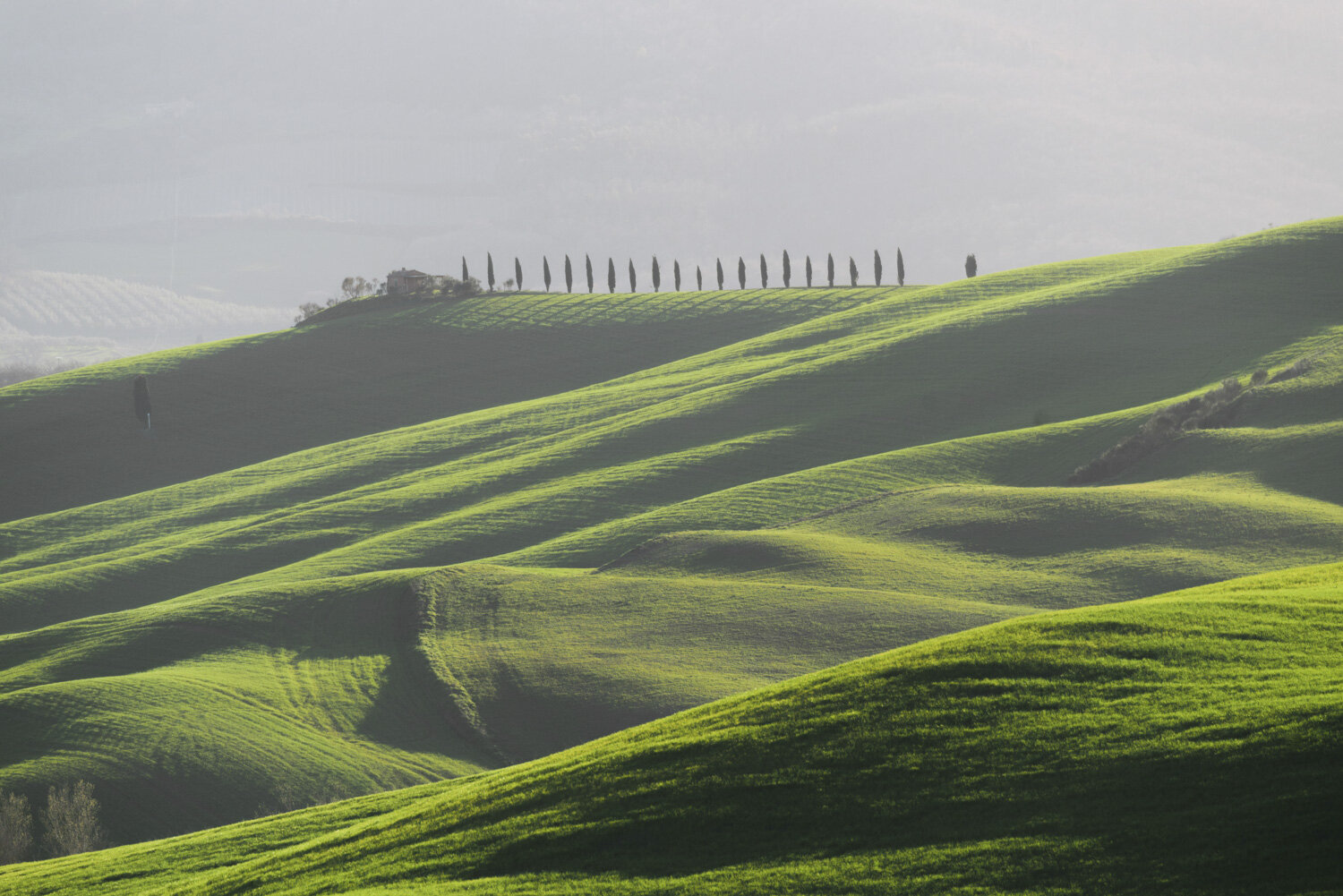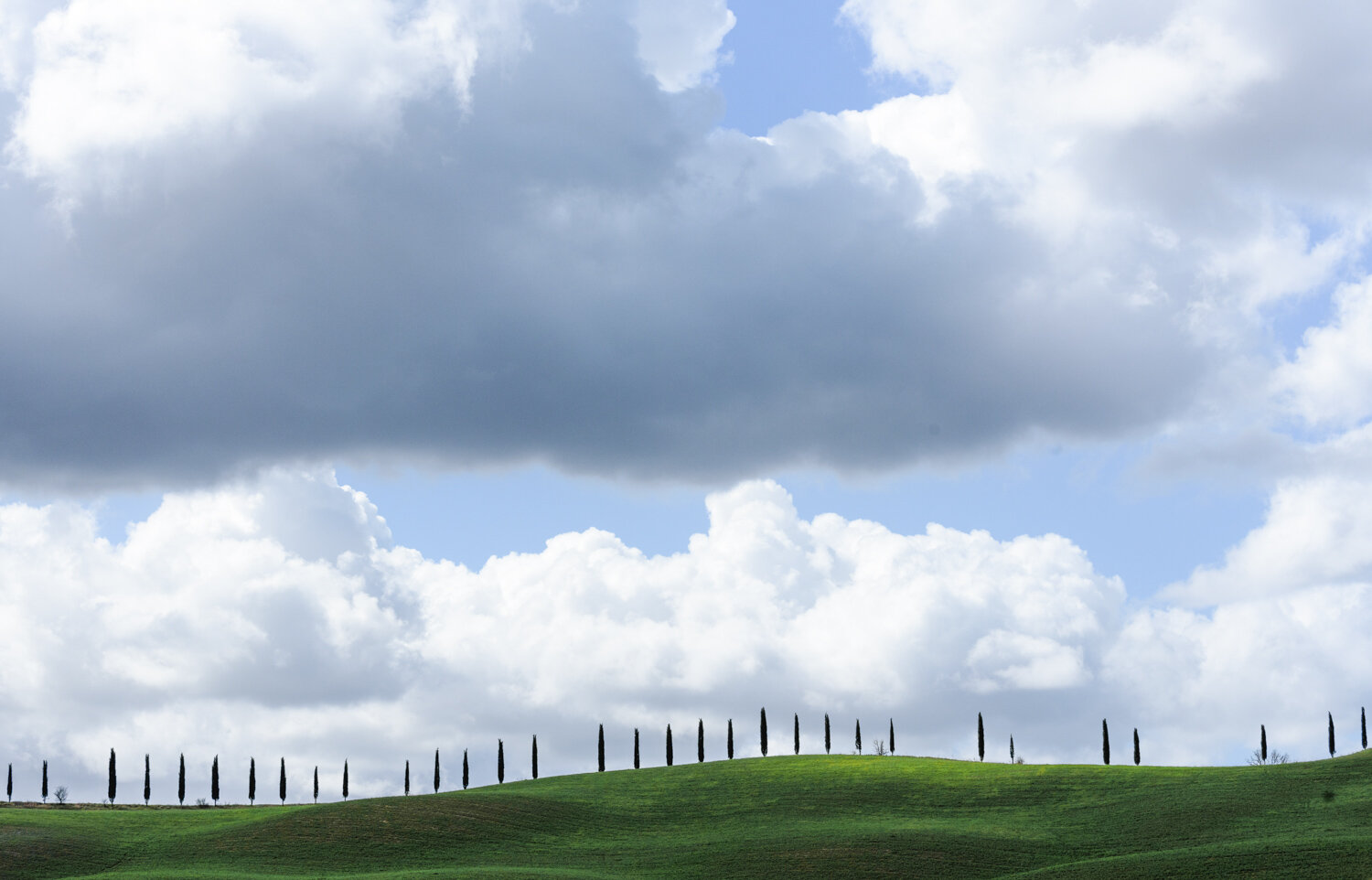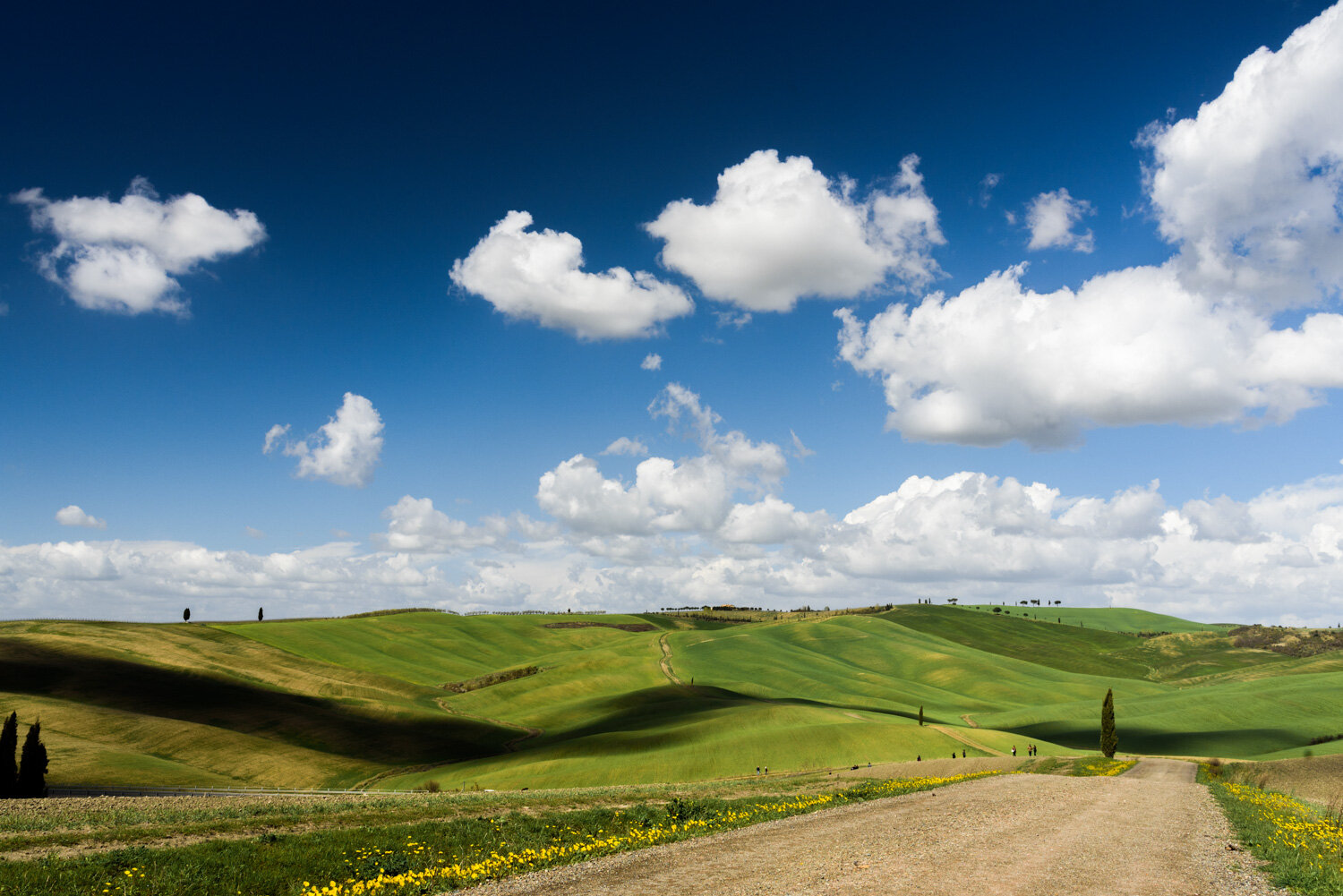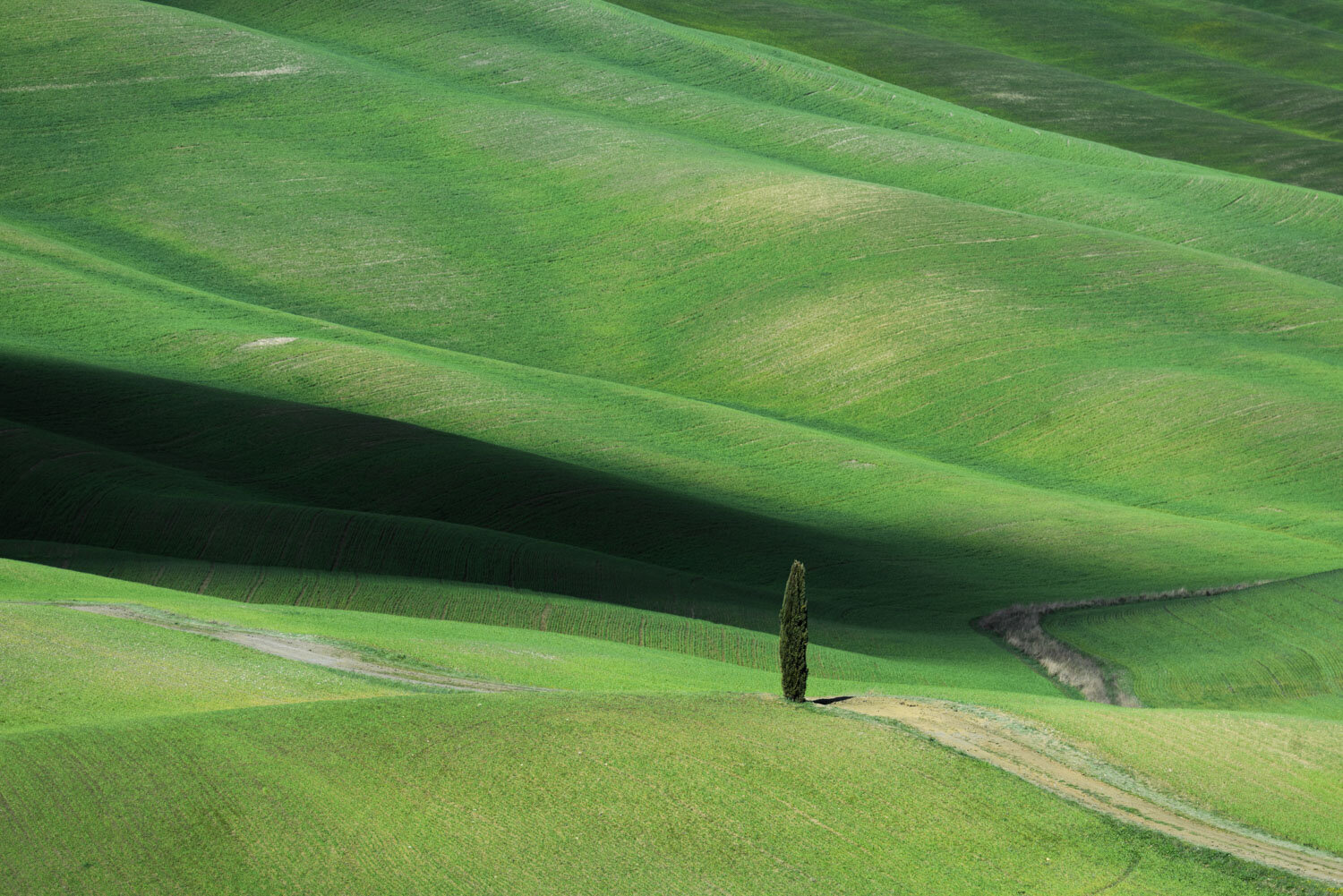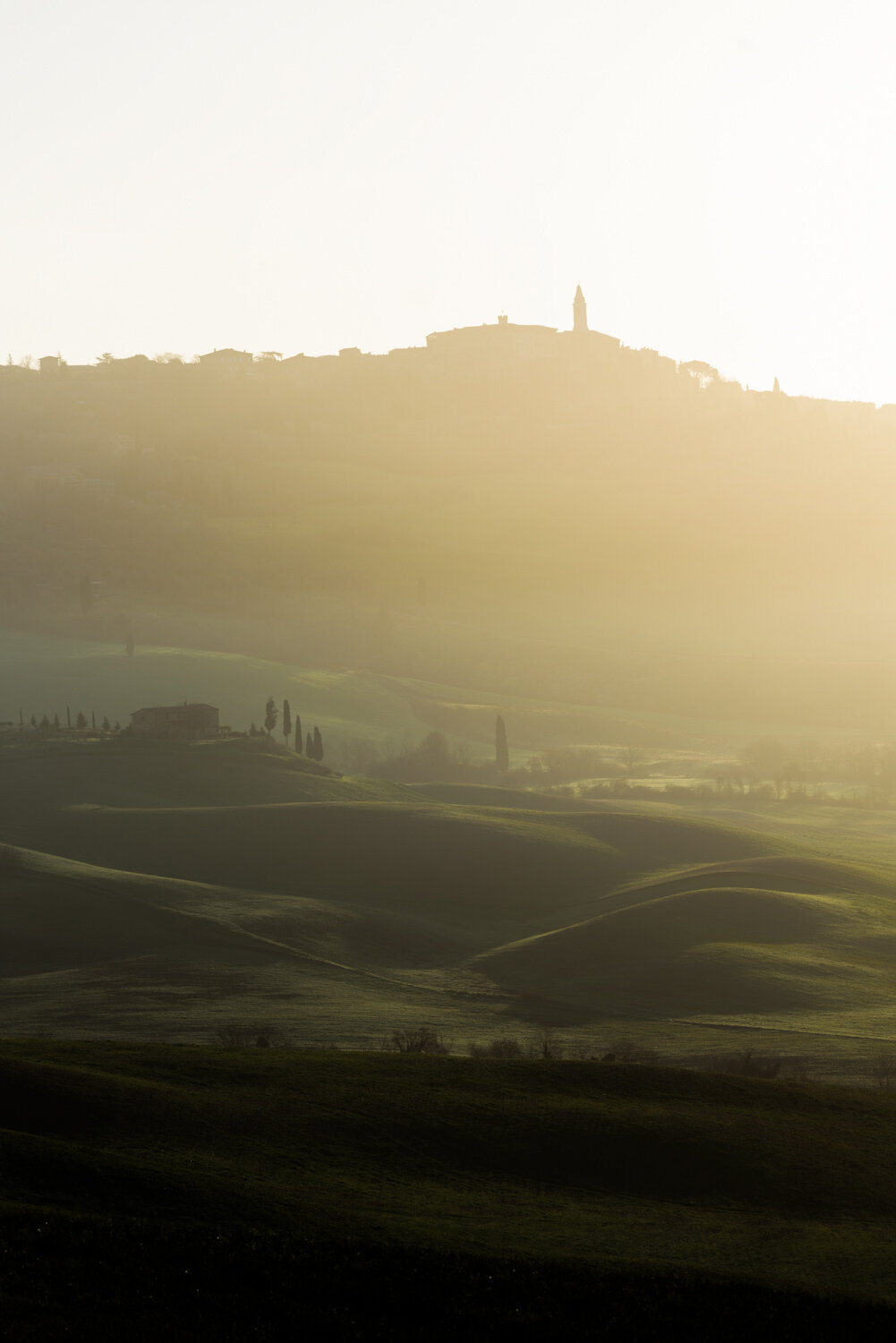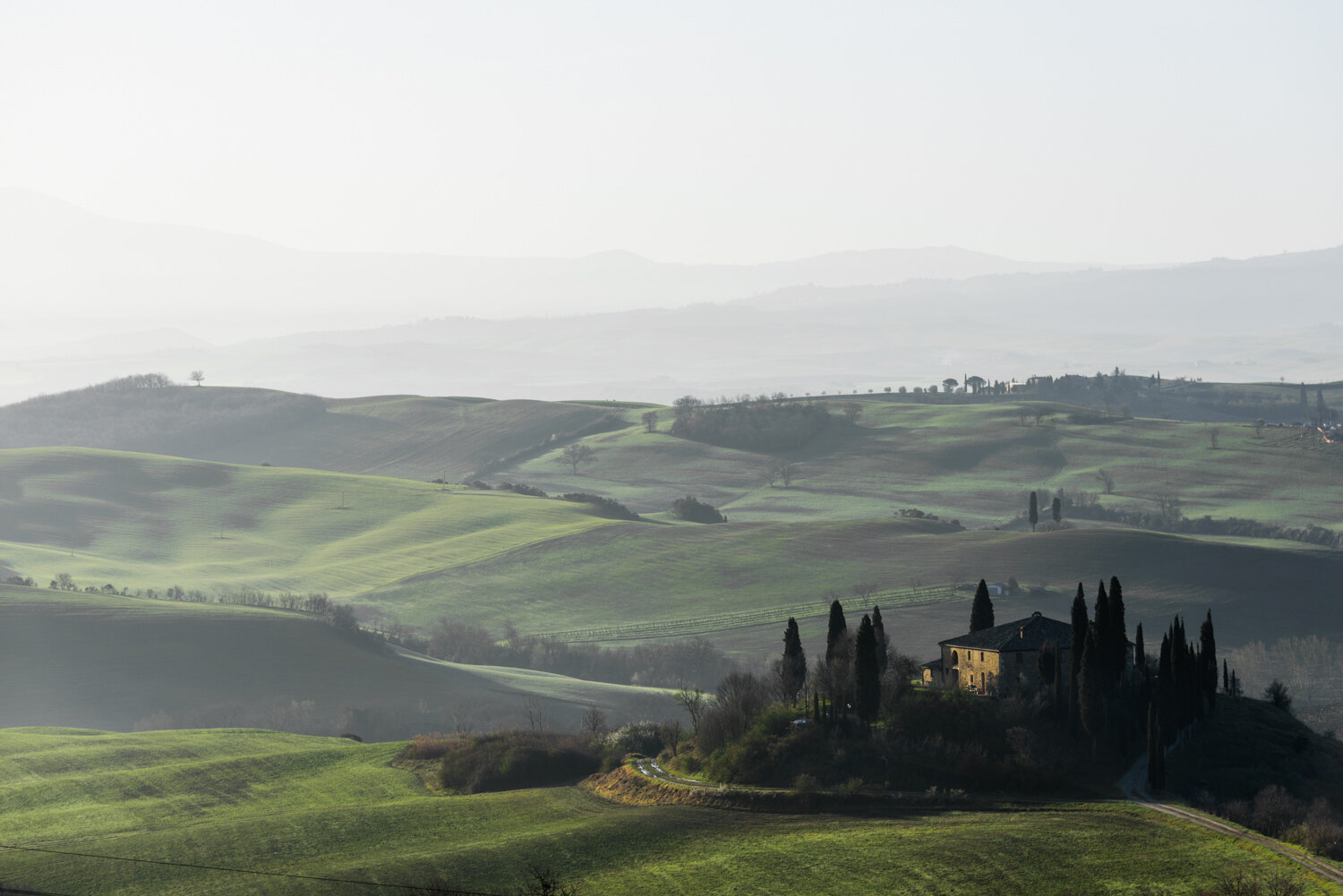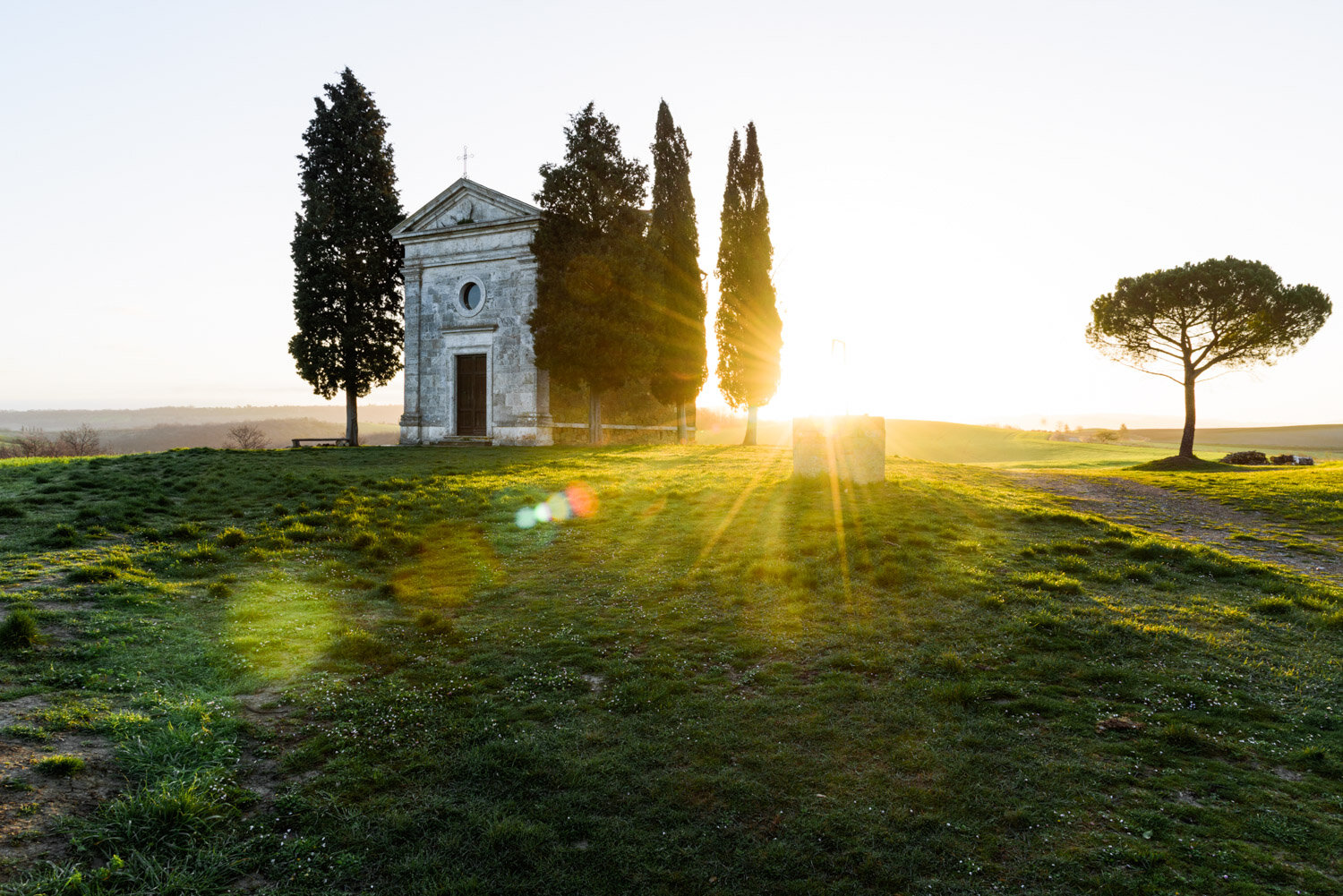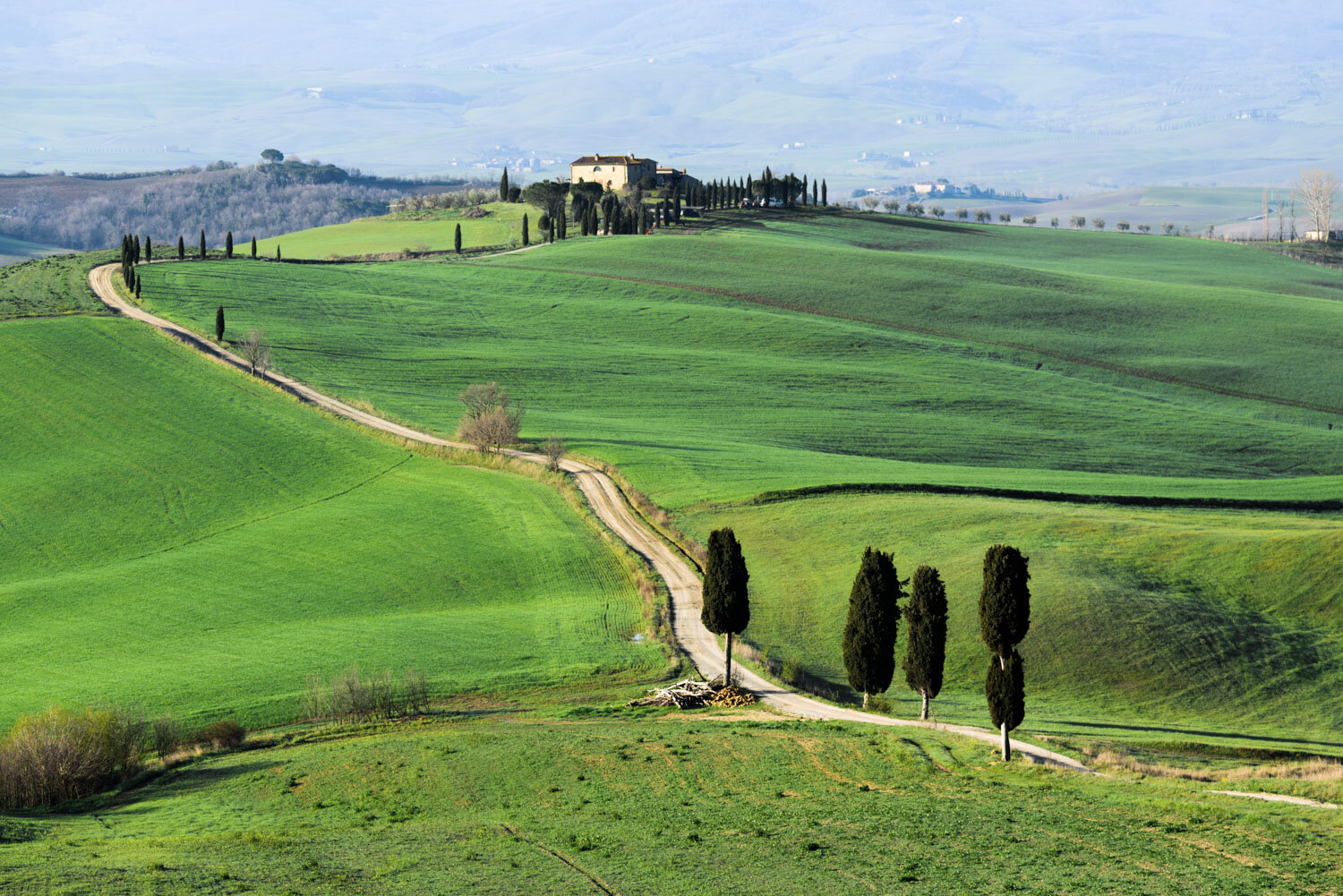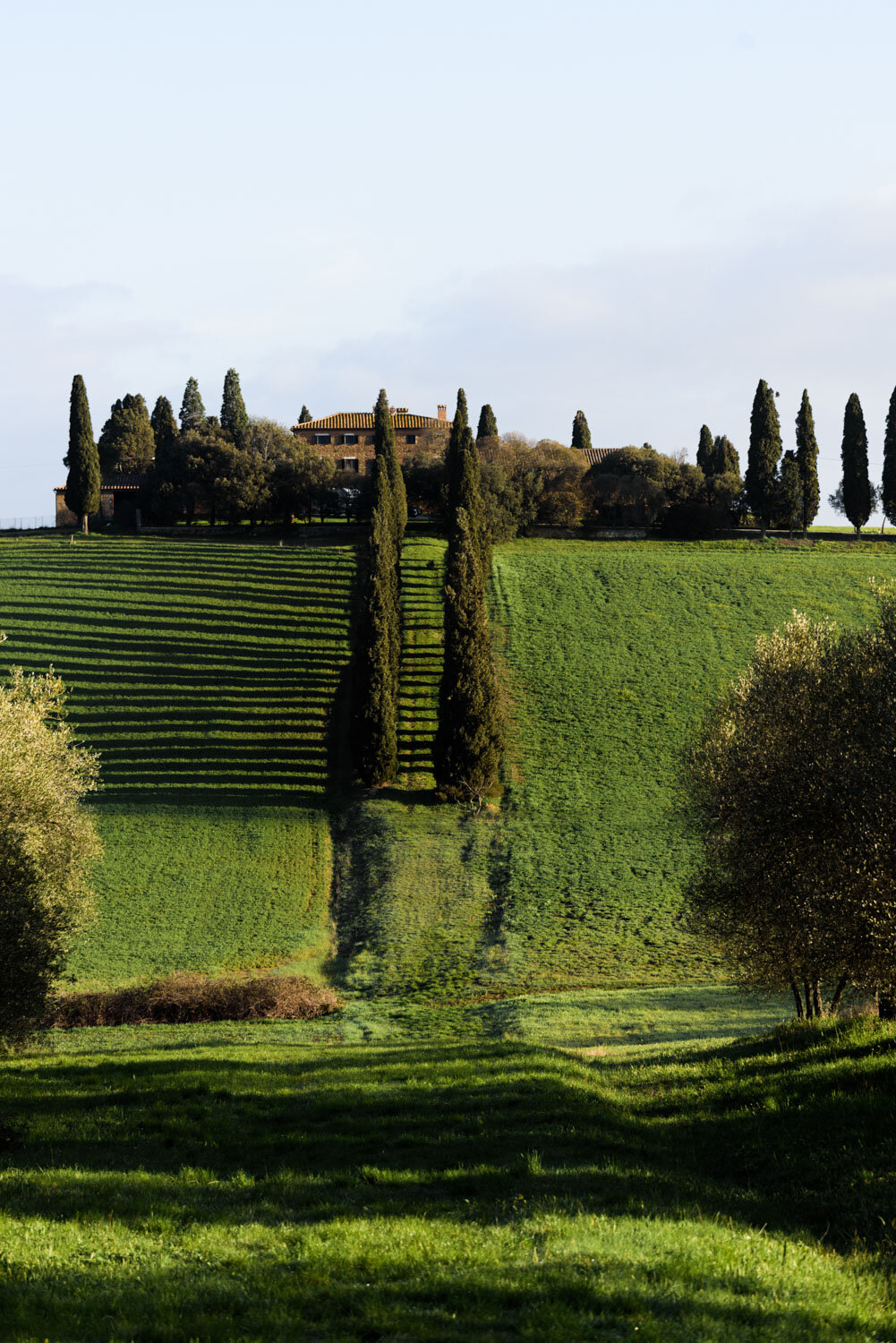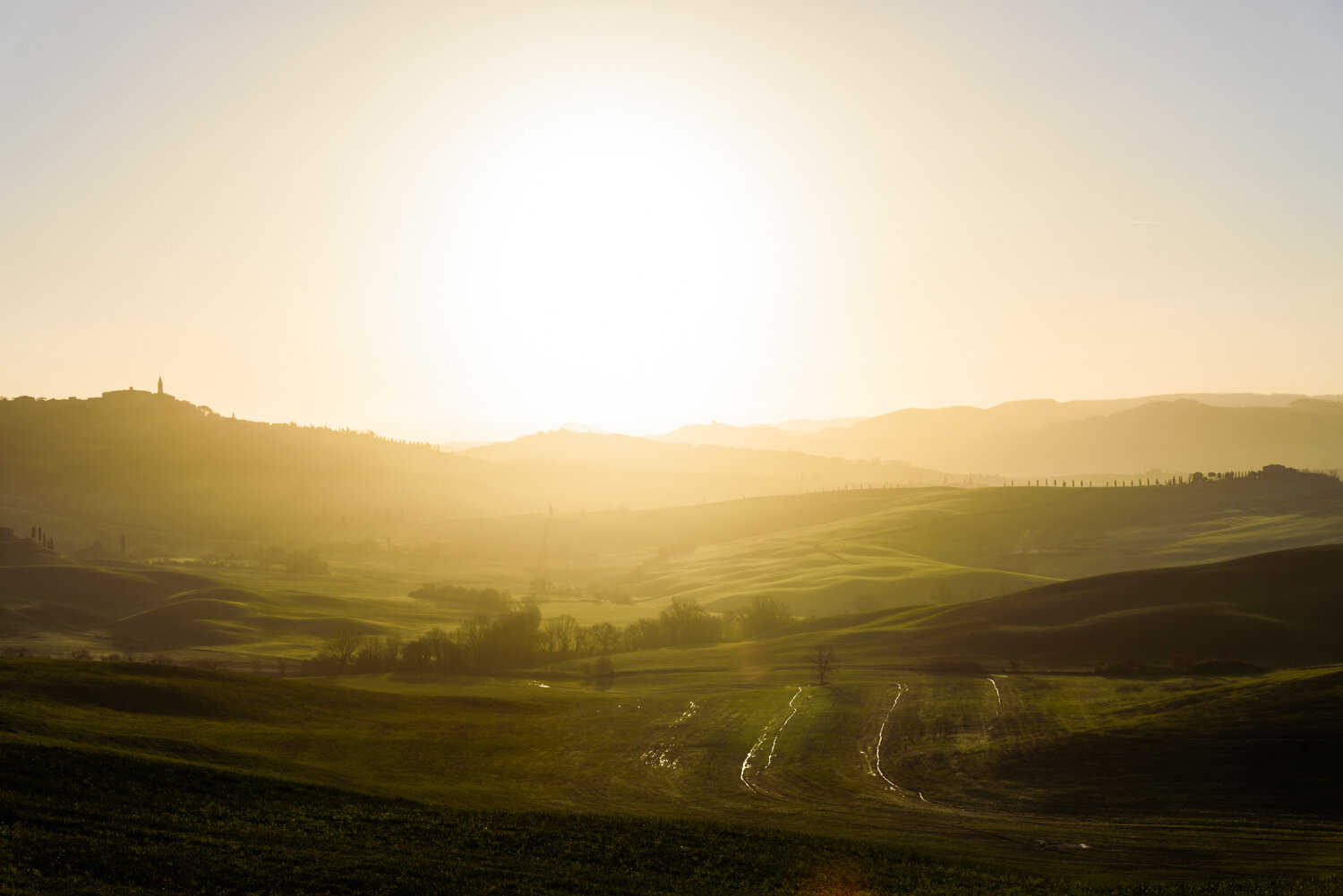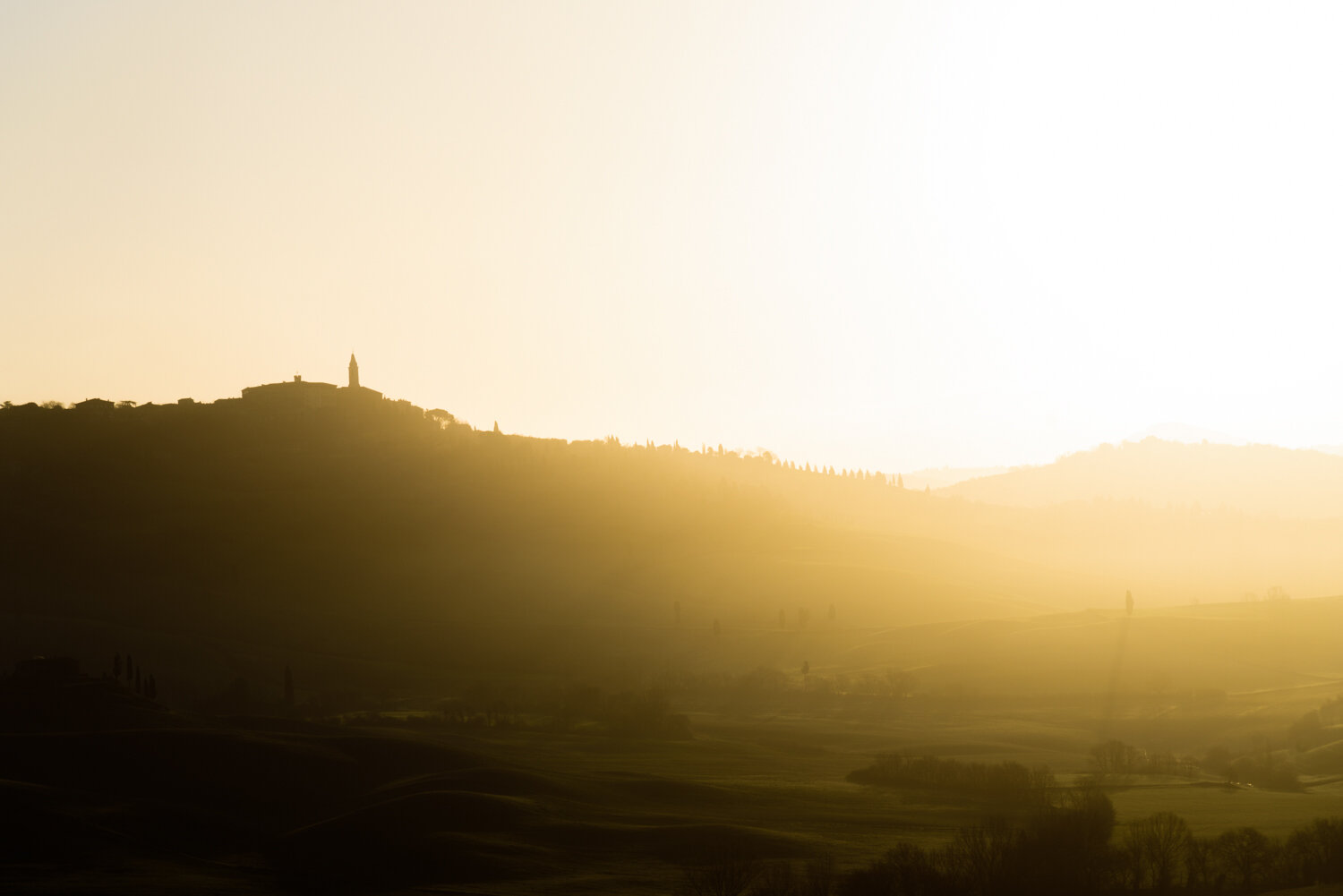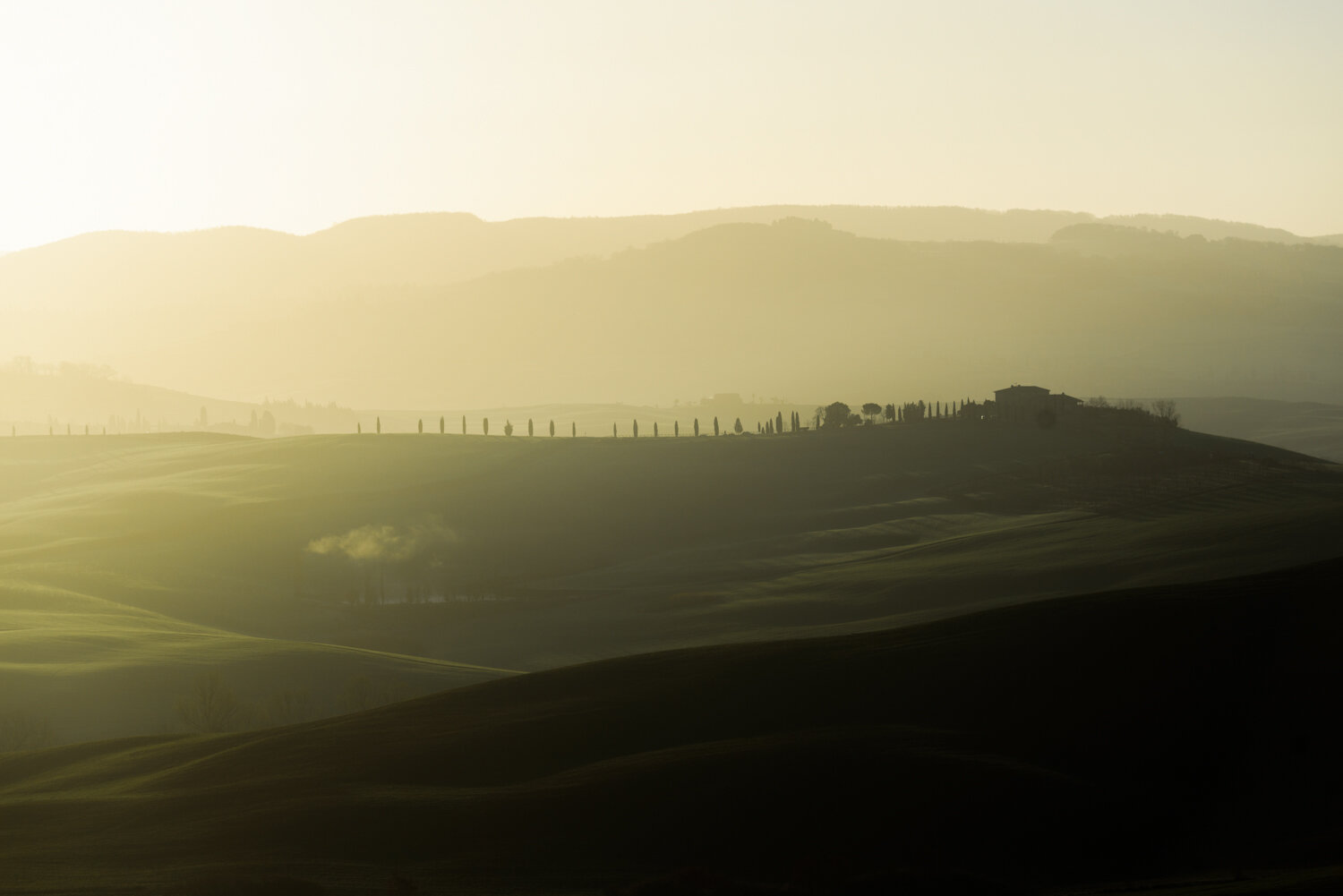Val d'Orcia striking views: photography tips
With the incredible amount of works of art and architecture, open air and in museums, Tuscany natural beauty is often overshadowed. However, you won't find a landscape image of Tuscany that doesn't portray a hilly landscape dotted with a row of cypress trees. Although the mountain landscapes of the North, those of the Chianti vineyards and those of the wild Tyrrhenian coast are still picturesque, the hills of the Val d'Orcia have something very special. The colours, the light, the villages, make up a unique postcard landscape.
The best way to explore these places is by car, grabbing the steering wheel and following the ups and downs of the hills, without a precise destination, perhaps trying to intuitively reach the row of cypresses that you see in the distance, or the farmhouse overlooking a ploughed hill.
For photography enthusiasts, I can guarantee that these places will leave you breathless: they are extremely photogenic and the light of sunset or dawn will help you create incredible photographs. I've fallen madly in love with them.
WHEN TO GO
The ideal period for landscape photography in Val d'Orcia embraces the months from April to September. It depends a lot on what you want to photograph and the colours you are looking for.
April is the period of the green hills, of a brilliant green given by the hydration of the rains. May and June are the months of field blooms, when you will find wild flowers and poppies dotting the large grassy expanses. July and early August are undoubtedly the driest periods and not infrequently you will find meadows that suffer the summer heat. From the end of August to the end of September, on the other hand, is the ideal period for the golden wheat fields, the hay bales arranged on the harvested land and the contrast between the green of the cypresses and the gold of valleys.
WHERE TO GO
The Strada Provinciale del Brunello that leads to Montalcino is a good entry point to Val d'Orcia. The landscape begins to change, and from the wooded hilly areas of the vineyards, you can see the clear green hills with cypress trees.
From Montalcino, head towards Pienza. The landscape along the road becomes immediately recognizable, and even on maps you will find the location "Cipressi di San Quirico d'Orcia" indicated. If you ever missed it, you will recognize it from the cars parked along the road, and from the photographers, amateur and professional, who crowd the fields with cameras and tripods.
From Pienza you have a beautiful view of the surrounding hills, and it is a really suggestive panoramic point.
The heart of the Vald'Orcia can be reached near the tiny village of Monticchiello: here every view is like a postcard, from the small villages perched on the top of the hills, to the rows of trees that follow one another on the ridges, to the hollows covered by meadows interspersed with roads, cypresses and farmhouses.
Driving along the Strada Provinciale 146 di Chianciano, you can admire some of the most famous views, including that of Podere Belvedere, which you will find in almost every postcard of Val d'Orcia.
The road that leads to the famous Chapel of the Madonna di Vitaleta branches off from this road. You can't get to the end of the road by car, and you'll have to proceed for a long part, dirt and muddy, on foot. The Chapel is located right in the middle of cultivated fields. It's a beautiful place to wait for dawn, but it's also very picturesque to be photographed from a distance, with an adequate zoom (we used a focal length of 400mm).
A few steps away from Pienza, you can reach, through a rather bumpy dirt road and then on foot, the place called Gladiator's Cypresses: its peculiarity is a small group of 4 cypresses, with a quite recognisable shape, which have become famous for being immortalised in the scene of the Elysian Fields in the movie The Gladiator, when Maximus caresses the golden spikes, with the Tuscan hills in the background. The scenes of his return home were also filmed in these places.
Podere Poggiomanzuoli, where you stumble along the SP146, is another protagonist of Val d'Orcia, with its recognisable tree-lined avenue, however inaccessible.
THE BEST TIME TO SHOOT
Sunrise is the most mystical moment in Val d'Orcia: the milky and bright sky forms a clear background and the profiles of the hills, the churches that surmount them and the rows of cypress trees are clearly visible. The morning humidity creates a mist that reflects the light and floods the space between the hills outlining depth and perspective. The visual planes are clear, each with its own shade of green, increasingly soft towards the horizon. Needless to say, there are very few willing to go out before dawn, so you will be sure to get photographs undisturbed by the human component.
Early morning or late afternoon are two equally good times to photograph these hills. In fact, with the exception of midday, when the light is too aggressive and too vertical to create photogenic shadows, even when the sun is high you can get a picturesque photographic result. This is the moment to photograph the rows of cypress trees that cast long shadows on the hills, the bright green of the hollows, the chromatic contrast between the intense blue of the sky and the green of the fields.
It is almost obvious to say that the sunset is another exceptional moment to depict the Tuscan hills. The shadows are sharper than in the morning, there is no mist and the colours are more intense, the golden light hits the hills softly highlighting their profiles.
This content is NOT SPONSORED, but based on my genuine personal experience. Spontaneous opinions, positive and negative, shareable or not, that I hope will help to live better travel experiences. My advice is a guide to lead you through world explorations, but the real journey, you build it!


